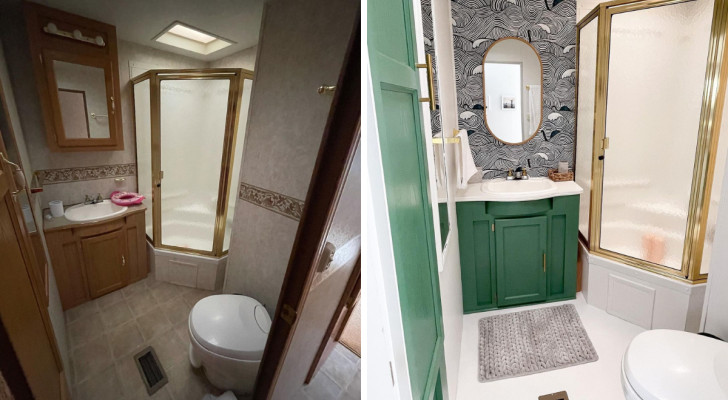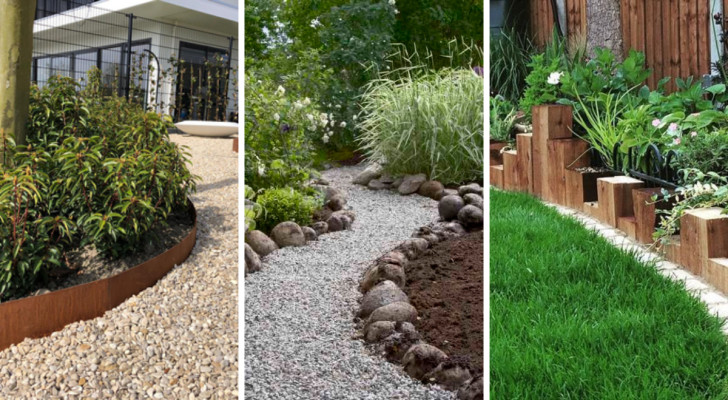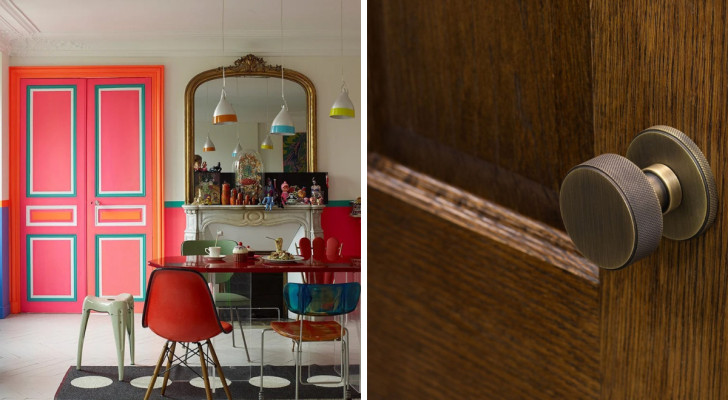You can renovate your floors inexpensively: here's how to do this using paint

A floor has a huge influence on the appearance of a room, but renovating old flooring can be very expensive. Well, not if you choose to renew/renovate the floor with a coat of paint! Let's find out all about how to do this:
1. Choose the look you want: color, finish and any decorations

Whether it's wooden flooring (the easiest type to deal with with this DIY project), concrete (also relatively simple) or tiles (a little more challenging), you need to visualize the result you're going for.
For starters, you need to consider the decor of the room, the natural and artificial lighting available, how much foot traffic the floor has to withstand, and if you want a dark, light or patterned surface. The finish - matte or glossy - is also factor to consider.
For example, using the same color on the flooring as the walls can make the room seem larger (and is perhaps useful for small spaces such as bathrooms, entrances and corridors). And for high-traffic areas, you can consider putting down carpeting or rugs/mats. And, if you choose a dark color, dirt will be easier to see. These are all examples of factors to consider carefully.
One way to to transform the look of a floor is to lay parallel flooring planks with in different geometric patterns (for example, in a two-toned, diamond-shaped configuration). Or use stencils to paint a decorative pattern on the floor... there are literally thousands of ideas to consider!
2. Prepare the floor's surface, in line with your plan

@charleygreyantiques/Instagram
Preparing the floor's surface starts by clearing away anything standing on the floor, and then washing it thoroughly.
In the case of a tiled floor, after having thoroughly cleaned it, you can apply the chosen paint.
For wooden floors, however, there is a further preparatory step: you will have to sand down the floor (especially if the floor has already been painted, stained or has a glossy finish). We recommend using 120 grit sandpaper for this. Then, use the vacuum cleaner to remove all the dust, wash thoroughly with water and, after drying overnight, you can begin painting.
As for the concrete, however, a lot depends on its condition: if the concrete new and in good condition, there is not much that needs to be done. However, if the concrete is old and showing signs of aging, we recommend preparing the surface using a mordant, abrasive product - aka a concrete etching product. This product contains an etching component (often an acid) which creates a roughened surface, while the abrasive particles facilitate the adhesion of the paint. If necessary, fill in any cracks and ensure the concrete is as level as possible.
3. Using the right products is essential

Depending on the type of flooring, you will need to use the right products and which include the following: a primer, the chosen paint and the finisher. The products must be those recommended for the type of surface to be painted, of course.
In the case of wood, we recommend you use a generic wood primer. Thereafter, apply the varnish (the number of coats depends on the effect you want). End the task by using a sealing product with a matt or glossy finish.
For concrete, you can apply two coats of paint to it directly. If you want, you can add a sealant, but paints suitable for concrete often already have this product already mixed in.
For tiles, you need to chose products suitable for the specific material they are made of (for example, ceramic, porcelain, terracotta, etc). Note: paint suitable for interiors and exteriors will be the most durable.
Also, be aware that after a few years, the paint will start to show signs of wear and tear.
4. Painting

When painting, use corner brushes on the edges and rollers for the rest of the floor's surface to ensure ideal coverage.
Furthermore, it is essential that the area being painted is well-ventilated so you don't inhale any harmful substances.
Be sure about the drying times needed before applying a new coat of paint and when you can step on the floor again.
Now, all you need to do is chose what surface to paint!

Of course, you can also paint outdoor flooring (which will usually be concrete). Now, all you need to do is chose what floors you want to paint!





